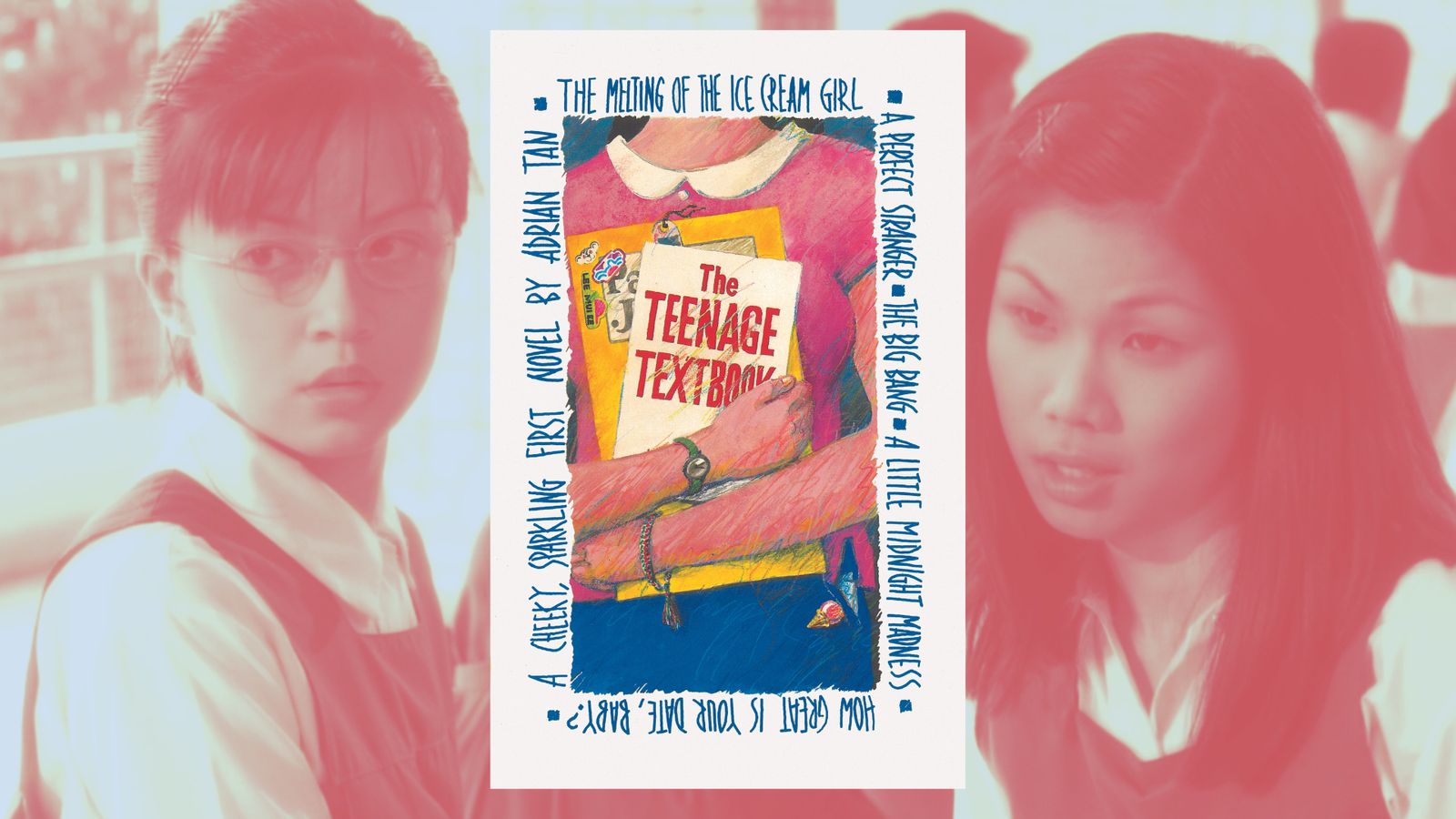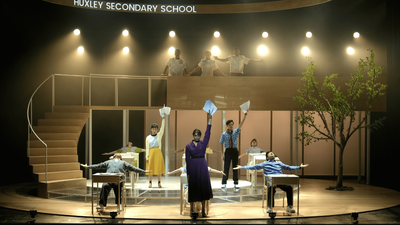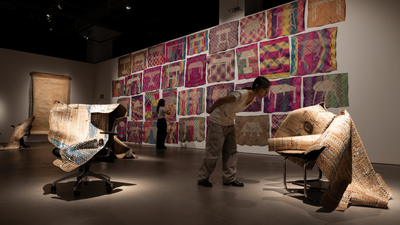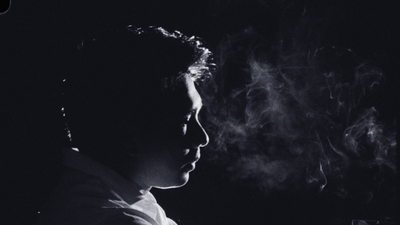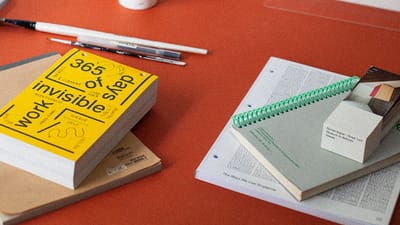The existence of two Adrian Tans was clear from the moment news of his passing trickled out late on July 8th. By noon the next day, three Singapore government ministers—all lawyers by training—had posted social media tributes to this snuffed-out leading light in the legal fraternity. The words of Indranee Rajah, K Shanmugam and Edwin Tong were genuinely heartfelt. They nonetheless jostled for online attention with photo after photo of The Teenage Textbook (1988) and The Teenage Workbook (1989), two humorous young adult novels Tan wrote in his twenties.
This split homage went on for weeks and would culminate in two distinct memorial events for the beloved lawyer-writer. A formal service was organised by his last employer TSMP Law Corporation; while his family, together with his publisher Landmark Books, led an artistic farewell. Somehow, no one thought the doubling to be unusual, as though the shock of Tan’s death at 57 had proven too great. This was despite his much-publicised, year-long battle with cancer—which commenced just two months after his election as president of the Law Society of Singapore.
In another universe, Tan’s legal leadership might have ushered in a new, more caring era that could inspire fresh cohorts of lawyers. He had built up an enviable career at Drew & Napier, Singapore’s oldest and largest law firm, and then at Stamford Law Corporation, now known as Morgan Lewis Stamford. In his eulogy given at TSMP’s memorial, Chief Justice Sundaresh Menon spoke of how Tan helped the visually impaired secure the right to a secret vote. The Law Gazette, the official organ of the Law Society, filled up with praise for his insight, compassion, way with words, and belief in the legal profession.
All this was still a drop in the bucket compared to the vast, more ordinary homage the other Adrian Tan got. Generations of Singaporeans have grown up reading Textbook and Workbook, his only two contributions to Singaporean literature. Hotspot Books—the young adult imprint under which Landmark Books released these novels—was as good as a one-man playground in the late 1980s. Another of its listed titles had been Dear Adam, Help! (1988), a collection of Tan’s agony uncle columns written under the pen name Adam Wong for the long-defunct Go Magazine.
When literary fame came a-knocking, that chummy alter ego took an indefinite break. So well-received was Textbook that it went into quick reprints and spawned a highly anticipated sequel the following year. The original title’s current memorial edition constitutes its 17th print run. As of June 30th, a combined total of over 87,500 copies had been sold, with over 46,000 copies for Textbook and over 41,500 copies for Workbook. In the immediate weeks following his demise, the books found themselves back as national bestsellers.
While these sales figures may appear modest by global standards, they have to be understood within Singapore’s specific context. Literacy in the island-state hovers around a healthy 97.6 percent, but only a segment of its population reads for leisure—of which an even smaller fraction bothers with its own writers’ creations. Singaporean fiction sells better than Singaporean poetry, with horror, humour, and young adult categories being most marketable—but this question of form or genre is ultimately trivial. Most titles just do not go beyond a single print run.
Why is this so? For starters, a cultural bias exists, tied in varying degrees to niggling postcolonial self-loathing, Singapore’s economic imperative, and an overall irregular quality of writing. There is also a lack of social, commercial, and critical interest of the kind that can situate works by Singaporean writers within a larger national conversation. Bookselling itself is not helped by an ubiquitous, over-competent national library that prizes accessibility, getting readers to borrow rather than buy, especially if they can afford to, these books.
The conditions for print in the 1980s were also challenging in view of how domestic publishers did not enjoy the level of international reach available today. What Textbook and Workbook achieved was therefore a remarkable feat. This was made more special by the fact that they did not need state funding or awards, once stepping stones to publication, or the charity of education authorities to create demand via a mention in school syllabi. On its own, the series was popular enough to spark off at least two plays, a chart-topping movie in 1998, and a TV series as recent as in 2021.
Tan’s stories specifically retread the stuff of teenage romances, and all his characters are known genre types. Lee Mui Ee, Yeo Chung Kai, Sissy Song, Loo Kok Sean, Tom D’Cruz, and Daniel Boon play bungling lovers, wannabe Casanovas, and earnest confidants at the cusp of maturity. Yet, Singaporean readers do not seem to mind this at all and, through the years, have slid their stories as gifts to friends, colleagues, and eventually their own children. They assume something of transcendent value to survive even when much of the fictional world has long sunk with time.
To a fair extent, the books do read dated. They casually mention, for example, trishaws; public telephones; second A-level intakes; SDU or Social Development Unit, the government’s once-ridiculed dating agency; and “Miami Vice”. A recurring gag involves the on-off relationship between teachers Mr Robert Delano Mills and Miss Boon Siew Geok, who are teased as “Mills & Boon”. Workbook even features a page from a made-up Hydrebella H Hyacinth’s pulp romance Savage Thrusting Passion. But such reads were all the rage of a different age—as were emotional bullying in school and reactions to interracial relationships that would be considered toxic today.
It is also not enough to look to Tan’s affable, quick wit, which, to be sure, is a definite draw. Who would not chuckle at such throwaway, schoolboyish lines as “I’m sorry, I have to hang up. I have to scratch my nose and I need both my hands”? Or “It was raining cats and dogs. She took a step and almost landed on a poodle”? Tan’s punchline typically comes fast at the heels of his set-up. So we read that, as “many students were rolling their eyes at students of the opposite sex”, “some of the students of the opposite sex picked up their eyes and rolled them back with equal interest.”
These jokes show the talent of an easygoing wordsmith who could charm just about any audience—often for no further purpose. Tan’s freewheeling wisecracks are an end in themselves, which also means that they can be somewhat problematic. We get, for example, ableist jokes about Kok Sean’s lisping and sexist jokes targeted at Sissy; Kok Sean calling his crush “Thithy Thong” brilliantly and awkwardly entangles both types. As such unkindness is not random but frequently informs the humour, a considerate reader may feel uneasy about what his or her own laughing entails.
Certainly, one key experience that unites Tan’s readers has been their teenage years, which Tan prefers to call “teenhood”. This is a period in one’s life marked by youthful infatuations, sudden changes in body and mind, and very private feelings of anxiety and self-doubt. Because no one ever escapes such a phase of growth, the novels’ setting in a junior college—specifically the fictional Paya Lebar Junior College or PJC—is incidental. Young Singaporeans who took other paths in life have found the stories equally enjoyable, identifying with the characters’ brash celebration of their emotional world.
The more precise bonding experience, though, relates to schooling in Singapore. A direct consequence of the country’s lack of natural resources has, after all, been an intense societal investment in human resources. This development is lifelong and begins with a school education that has since become world-famous for consistently producing some of the world’s top academic performers. Yet, the success comes at the price of great pressure placed on Singapore’s young to excel, and to attempt a corporate ladder-like ascent that used to involve going to a junior college and then a university.
The world of Tan’s PJC is thus refreshing to maturing readers in one key respect. Although the demands of school still dominate, academic study takes second place to the teenagers’ pursuit of all things teenagers pursue. They pay lip service to adult authorities and go through the motions of learning, choosing rather to expend more energy on drinking deep the cup of life. They take up part-time work to gain some measure of financial independence, go on dates and let themselves love and be hurt, and give themselves to friendships, cliques, and a range of social pastimes.
All this may point to PJC being not exactly a high seat of learning, but what is curiouser is the institutional habits its students nonetheless persist in. While the young are suitably well-rounded and, in the world of school culture, choose fun, they all—without exception—unconsciously defer to the sort of security promised by book instructions. Indeed, official textbooks may hardly get a mention here, but the one that does dictates to its users how they ought to live as soon-to-be adults, the social codes to follow, and the best way to deal with all their life problems.
In fact, readers of both Textbook and Workbook are invited to see these guides as ambiguously one and the same as the novels in their hands. The title on each book cover serves visually as the title of Tan’s work as well as that of the guide featured in it. Each novel comes with pages from its namesake weaved into its central narrative. The first novel’s introduction even prepares us for the reading journey: “Books? That’s right...this book is actually a combination of two books.”
From the start, we learn that the titular Textbook exists as some kind of sacred writ for youngsters. It instructs them in a droll, know-it-all voice on how to look attractive, initiate a conversation, behave on a date, understand their different sexual emotions, and so on. The additional Workbook is a “soon-to-be-released-globally” companion made up of pages of guided questions for learners to attempt. It likewise claims to be “useful to solving any minor personal crisis that you will encounter while growing up as a teenager in sunny Singapore.”
These junior self-help guides are quite unusual subcultural merchandise, considering that they are less about growing up than fitting in. What any textbook offers, as we know, is mere head knowledge, statements gleaned from someone else’s knowledge and experience—or lack of experience—which cannot be counted as what one receives intimately. A workbook, by extension, may provide practical exercises, but it again just simulates knowledge gained from actual learning or experience and reinforces the value of abstraction.
The heart of Tan’s stories can be summed up as this need to take flight from a deceptively reassuring bookish culture altogether. So Mui Ee and Chung Kai cannot fall in love with each other properly until they are able to put behind them literal textbook lessons on matters of the heart. Sissy and Daniel use copies of a workbook to navigate their emotions, understand their deep desires, and get a peek into each other’s desires. Yet, the mediation being offered consistently misleads them and even risks their very chance at romantic fulfilment.
Tan makes no apology in showing this widespread false faith in teaching and assessment texts as carried over from a culture that climaxes in secondary education. While thinking back on her previous phase of life, Mui Ee therefore remembers “a lonely, panic-stricken schoolgirl desperately scanning the Ten Year Series exam booklets, fighting to stay awake.” On the eve of the release of the O-level examination results, almost all the teenagers are described as being on the verge of an anxious breakdown and having troubled sleep.
It is this world of Singapore’s pressure-cooker education that has triggered an entire lucrative industry of supplementary learning. The competitive climate forces students to turn to private tuition and self-imposed additional homework in order to better themselves or simply to keep up. In Singapore, textbooks and workbooks are never mere instructional tools. They represent a stage in one’s life dedicated to long hours of rote learning and the practice of regurgitation in public and private spaces, all the time treating cursory, self-indoctrinated knowledge as supreme.
In this context, what the handbooks say are less to be questioned than to be embraced, their activities aiding the process of internalisation. There is little to no room for critical thinking, let alone independent discovery and creativity. All that is needed for a young person to know at every step is supposedly already contained within each year’s guides. As students are tested on what these books contain and the tests are ultimately what matters, even the books play functional roles. The true end of student life is the examinations, by which each individual’s social future is to be determined.
This turns, of course, what we consider true education radically on its head. Learning ought to mean understanding or being able to apply what one knows rather than passing tests to prove that learning has taken place. The higher objective, to be sure, is what Singapore’s education system has since tried to steer itself towards, with limited success. On his part, Tan depicts the folly of textbook overreliance—and, by extension, a whole pedagogical mindset—which speaks to Singaporeans. To celebrate his novels is thus, in a large part, about reminding oneself to live life without handrails.
The question of why newer Singaporean novels have yet to generate the kind of adoration that Tan’s enjoy is now surely obvious. The country’s English-language writers today choose to be internationalists. They create with an ear for a wider audience and, even when they involve Singapore, focus on aspects of history and ideological awareness that are nods to the learned and well-travelled. Recognition on a different scale means more to them than love from fellow Singaporeans—ironically a way of thinking encouraged by the state’s emphasis on outward acclaim.
Tan’s humour series is a national rather than an international gem because it is a thoroughly domestic creature. It dedicates itself to being enjoyed primarily by Singaporeans, with an environment so nuanced that one might need twice the page count to explain every context fully. Yet, with extensive clarification, the works would no longer have the powerful effect of what they say with a nudge and a wink. Tan’s novels have been rewarded and prized more than the usual literary products, because their readers recognise and understand that they are at the centre of these stories.
Such earnestness nonetheless carries its own socio-political disadvantage. Though well-loved for decades, the books remain outside the scope of homegrown writing read in schools. Tan asked me a few times before to speculate on why his works could not be textbooks—but I suspect that he knew the answer well. Others have asked the same question, and some still think it to be due to the use of Singlish; yet, that has not stopped the study of Haresh Sharma’s Off Centre (1993), Jean Tay’s Boom (2009), and some Catherine Lim stories.
There is a distinct subversiveness in Tan’s books that is absent in much Singaporean writing. We find their young merry-making in direct dismissal of authority both at school and at home. We see the very instruments of school culture being made fun of as out of touch, farcical, and manipulative—and regularly called “useless”. The books warn impressionable teenagers about being impressionable even as they prosper in communicating this warning. Their message is not lessened or encrypted at the expense of the readers who need to hear it clearly.
This message is what we may perhaps see as describing Tan’s own trajectory in life as well. In one of his last interviews, conducted by Lianhe Zaobao, the writer mentioned how he had turned down a teaching scholarship to study English overseas in order to pursue law at the National University of Singapore. As his novels were written soon after that decision, we may read them as, in a way, a farewell to a career tied to literature. The humourist never published another book—although his viral LinkedIn articles of his final years might suggest an interest in a gradual return to popular writing.
Yet, in a widely circulated 2008 speech given at a Nanyang Technological University convocation ceremony, Tan famously told graduates to “resist the temptation to get a job.” This may sound contradictory coming from someone with an outstanding legal career, but Tan explained that he meant finding the singular pursuit so energising that it would not feel like work. For him, lawyering was that pursuit because of his love for language and arguing: “If I didn’t do that, I would’ve been in some other type of work that still involved writing fiction.” To practise law was his way to keep playing with words artfully.
This clarification returns us to the writer who once brought forth stories about young adults choosing to follow their hearts. The older Tan extolled a new generation to do what he implicitly had not stopped doing. It may or may not be advice heeded by his legions of fans—just as we cannot know for sure if the man did live out what he preached since, in his time, law was that prestigious career choice if one could not be a doctor. The only way to know the truth is to find out how he advised his own children, and that is a dead end. Wisely enough, he did not have any.
Gwee Li Sui is a poet, a graphic artist, a literary critic, and a translator. He has published seven poetry books, the latest being This Floating World; graphic novels such as Myth of the Stone; non-fiction titles such as Spiaking Singlish and FEAR NO POETRY!; and Singlish translations of literary classics. He and Adrian Tan fronted the Singapore Writers Festival’s immensely popular Closing Debate from 2009 to 2018.
If you enjoy Jom’s work, do get a paid subscription today to support independent journalism in Singapore.
Letters in response to this piece can be sent to sudhir@jom.media. All will be considered for publication on our “Letters to the editor” page.


